Menus
- Twin-cylinder in-line, 749 cm3, 70 hp, 6.8 m / kg, 195 kilos dry, from € 1,000
- Produced from 1989 to 1995, this big and reliable road trail smells of adventure
- Discovery
- In the saddle
- In the city
- On motorways and main roads
- On departmental
- And off-road ?
- Part-cycle
- Brakes
- Comfort and duo
- Consumption / autonomy
- The price today
- To be checked
- Conclusion
Twin-cylinder in-line, 749 cm3, 70 hp, 6.8 m / kg, 195 kilos dry, from € 1,000
Produced from 1989 to 1995, this big and reliable road trail smells of adventure
It is, without a doubt, to the Paris-Dakar that we owe the Yamaha XTZ 750 Super Tenere. Because after having shone in the first years of this event and having used it as a launching pad for its iconic 500 XT (with the victories of Cyril Neveu in 1979 and 1980), the Dakar enters, unsurprisingly, in a race to armaments and manufacturers reacted by developing two-cylinder trails, such as the BMW R 80 and 100 GS or the Honda Africa Twin, which won 4 consecutive Dakar victories from 1986 to 1989.
None of that at Yamaha, which is content to upgrade its single cylinder to 550, then 600 and 660 cm3, playing on the Tenere lineage if necessary. Admittedly, in parallel, the boss of Yamaha France, the omnipotent JCO, has very specific racing motorcycles prepared and we are witnessing in particular the breathtaking FZ 900 T whose 4 cylinders tore the desert at 200 km / h. All good for the buzz, that.
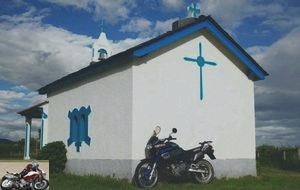
But for the business, still nothing more consisting in putting in the tooth. Thus, Yamaha will therefore create a new specification: design a machine capable of winning the Dakar, whose fame was gigantic at the time, while having to be able to regain market share in the niche of big trails..
For this, Yamaha designed a new engine and demonstrated innovation, with this very compact in-line twin, equipped with a dry sump and a gearbox located high up. Cubing 749 cm3, this engine is very modern with its 5 valves per cylinder, its double balance shaft and its Mikuni 38 mm flat-valve carburettors, arranged to provide an almost vertical supply. This engine develops 6.8 m / kg of torque and especially 70 horsepower, a significant value, to be compared with the 45 horsepower of the 600 monos of the time and the 57 delivered by an Africa Twin. Despite this, it was easy to navigate, requiring a major overhaul (valve clearance adjustments) only every 42,000 kilometers. This engine block will have a very long career, since without major modifications, it also benefited the 850 TRX and the 850 and 900 TDM. It is, and rightly so, known to be extremely reliable..
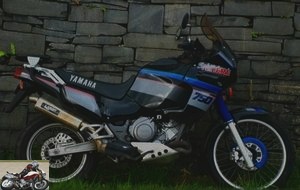
On the competition side, the objective was fulfilled, since the XTZ 750 Super Tenere won 7 Dakar in 8 years (from 1991 to 1998, a streak interrupted only by the victory of a Cagiva in 1994)! And on the civil level, what has happened? This is what we will see in the paragraphs below.
Discovery
Double headlight optics, large tank (26 liters, excuse the little!), Substantial seat height and size which is just as important: the Super T, like the XTZ 750 Super Tenere was quickly nicknamed, has the look of the job and that’s what he was asked to do at the time. Curiously and while the color chart has always included three or even four colors each year and that the Super T has been in the catalog for 6 years, we see that the palette was more classy than racing.
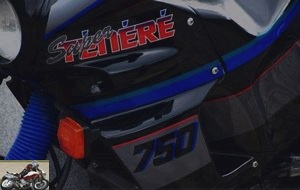
The Super T does not only impress with its forms: it also impresses with its details, having been the first trail to be equipped with a double front disc brake, while the satin exhaust is inspired by that of the contemporary FZR 1000. We also note the standard hand guards, the large aluminum swingarm, the large engine spoiler that promises to smash stones even better than Cayenne, as well as the complete dashboard, nicely arranged in its brushed aluminum plate..
In short, almost 28 years after its arrival on the market, the Super T supports the weight of history rather well..

In the saddle
It is high, the saddle: 865 mm! And it is very large, this tank. And it is curiously bent down, this handlebars! Nevertheless, we have to put everything in perspective and today, we are dealing with some big trails that exceed 260 kilos (Triumph Tiger 1200 Explorer or Honda VFR 1200 X Crosstourer), but at the time the Super T was nevertheless one of the big ones. parts. Like what, time allows things to be put into perspective.
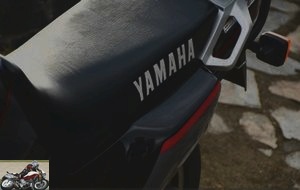
Once on board, we appreciate the saddle, very thick, the readable dashboard, the complete equipment. The fuel cap is lockable and the choke control (we have forgotten that nowadays with injected motorcycles!) Is easily accessible, in the middle of the handlebars. There is more than to put a little kick of starter: hey, it is nice, this sound. Grave, deep, slightly metallic, a few gas strokes in a vacuum already give the feeling of a full engine. Is it subjective? We’ll see…
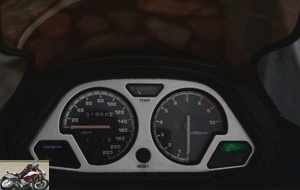
In the city
Granted, the Super T is relatively wide and tall, but it’s not a Super Tanker either. It is rather freestanding at very low speed and its engine is both round, flexible and picks up well from low revs. In this exercise, it snorts less than competing twin cylinders. Other good news: rather soft controls and even the brakes, whose very mild bite allows you to nab the lever without fear of crossing the skis (a double-edged argument, as we will discover later in this very comprehensive presentation, my faith).
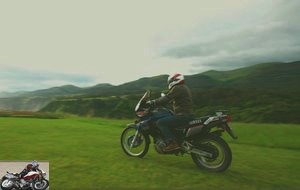
But what is it that is rough in this universe full of cotton wool? The gearbox, of course! On the Super T, it is clearly not a success, with noises of pinion and the feeling that there is cartilage between the gears, that it gets stuck a little when changing gears. In short, it’s not terrible: we console ourselves with this engine, a success, whose terribly elastic behavior allows to do without (a little) the box.
On motorways and main roads
With 70 horsepower, the Super T has a breath much more powerful than that of the trails monos of the time, just like the V-twins of the Honda Transalp and Africa Twin. Not only does it swallow the Autobahn at 180 meters without flinching (where it is allowed, of course, that the numerous officials of the Road Safety, always numerous to read us – we know this thanks to their IP addresses – do not go reading this paragraph), even if the Super T, in these conditions, tended to wriggle a bit in the butt, because the rigidity of the chassis is not its primary quality. Nonetheless, its engine feels perfectly at ease high in the revs. And, suddenly, it easily spreads 20 to 30 km / h faster than what a single cylinder could do at the time..
In the context of more reasonable use, the Super T seems to be able to go to the end of the world at a small 140 km / h cruising, stalled in fifth with the tachometer needle at 2000 rpm from the red zone . Under these conditions, the 26-liter tank promises to space out the breaks, but in reality, the Super T is not very sober and does not easily drop below 7 l / 100. In fact, this engine has such resources that a 6 box would not have been luxury.
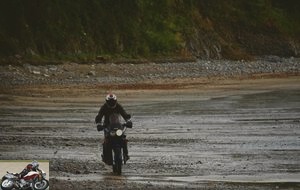
On departmental
It was discovered in town that the engine was a big rubber band, capable of cruising on a trickle of gas to the purr of a big cat; we discover on small road that, when called upon, it is surprisingly lively between 5 and 8000 rpm, with accelerations which are a pleasure to live and which were a little unheard of, until then, in the world of trails.
We also appreciate its agility, thanks to the tires of still small dimensions (90/90 x 21 in front, 140/80 x 17 behind) and the saddle and suspension comfort are quite correct and allow to take narrow roads and bumpy without much apprehension.
However, we will preferably have a smooth rhythm and not too bloody. Because the braking is quite light and the chassis has nothing rigorous in the attack and the trim movements are generous. But conducted smoothly, the Super T remains pleasant.
And off-road ?
If we limit it to the rolling path, the Super T comes out with honors. But keep in mind that the settings of its cycle part are very road, that its weight is high, that the tank is large and will appreciate only moderately to be smashed against stones. In this use, there was no photo: a Honda Africa Twin did better and the mono trails too…
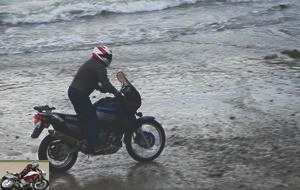
Part-cycle
The Super T’s chassis was less innovative than the engine. The Super T is satisfied with a double steel cradle frame and a conventional fork (diameter 43 mm, travel 235 mm), but still has a steel swingarm and a rear suspension Monocross type. , with a travel of 215mm. Little coquetry: the shock absorber rod has a kinematics derived from that of the brand’s YZ: with that, it is ready for the Dakar, the Super T !
Brakes
We can innovate and not reap the fruits of this daring: the Super T was the first trail to be equipped with a double front disc brake (diameter 245 mm, 2 piston calipers). Except that: it does not brake! The worst part is that it was intended: the Japanese engineers, sensing that this machine was going to go off-road, did not want a very aggressive bite. The result exceeded their expectations! Yamaha heard the criticisms on this point, emitted from the first press tests and tried to remedy it on the 1990 vintage, with a more rigid hose, at the level of the Y-junction which goes to the two discs. The result went unnoticed and whatever the vintage, the Super T is a mediocre brakeman, especially since it deposits quite well..
In this context, the rear brake (a 245 mm disc with single piston caliper) is a useful complement, although not sufficient. No ABS which, at the time, was reserved for the very high end. At the same time, given the weak bite, you are unlikely to block the wheels.

Comfort and duo
According to today’s criteria, we will consider the comfort and the duo as correct, because the bike is relatively spacious, does not vibrate, has grab handles and both its saddle and its suspensions are downright frequentable. In addition, the hand guards are appreciable and the bubble deflects the air above the shoulders.
At the time, on the other hand, the Super T looked like a pullman, especially against the spartans and vibrating single cylinders of the time as well as against the Africa Twin and its saddle padded 100% with peach stones..
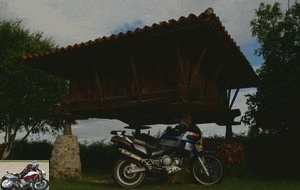
Consumption / autonomy
The Super T is a bit focused on the drink even if, with 26 liters, we can see it coming and the 300 kilometers of autonomy are a guaranteed minimum. Over time, the lock on the fuel cap can become hard, as can the fuel valve..
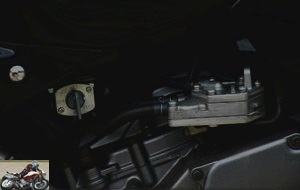
The price today
Good news ! It is not worth much and in any case less than an Africa Twin of an equivalent vintage. There are decent Super T’s at a little over 1000 euros, which will cost little to get back on the road. And the exception, a first hand, followed, not too much mileage, will be difficult to sell for more than 3000 euros. Considering the reliability and the aptitude of the machine to swallow the kilometers, this can be an excellent opportunity.
To be checked
The engine block is very solid and the only congenital weakness is in the shock absorber springs of the clutch housing. As the driveline approval is average, they can tire and broken springs can damage the engine. Another weakness: the regulators, at least until the 1992 vintage, when Yamaha changed reference. Finally, the oil is checked when the engine is hot (and when returning from a ride, not after 30 seconds of heating on the kickstand): the result is that many owners are careless and many Super T’s do not run with the oil level. adequate.
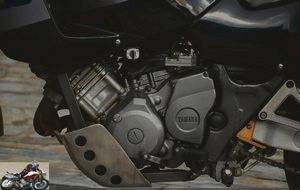
For the rest, knowing that the motorcycle is at least 22 years old, we will check for leaks and mechanical seeps, the condition of the bearings of the cycle part, the alignment of the wheels. There are still mechanical parts, it becomes more difficult for body parts. We will therefore favor a healthy and complete machine.
Conclusion
The Super T was a decent commercial success, but not exceptional, because it had potential, but also some youthful flaws, which Yamaha hardly corrected, the machine having remained practically identical from the beginning to the end of its career. . It worked well in the first year of its marketing: the novelty effect paid off, the Dakar victory too and, in 1989, the Honda Africa Twin was carrying 650 cm3. A year later, Honda responded with a 750 and if the Honda V2 is down in power and pleasure, the chassis is much more rigorous (but the saddle is made of wood!). Among customers, doubt is sown and the figures reflect this state of affairs:
Sales of Yamaha XTZ 750 Super Tenere in France:
| Year | Units sold |
|---|---|
| 1989 | 3.115 |
| 1990 | 3.040 |
| 1991 | 1,789 |
| 1992 | 1,346 |
| 1993 | 670 |
| 1994 | 258 |
| 1995 | 218 |
| 1996 | 110 |
| 1997 | 32 |
If sales are withering, it is also because the motorcycle does not evolve. Or very little: a new clutch nut appeared in 1990, when the ergonomics changed a bit with the passenger footrests advanced and lower. In 1991, it was the turn of a new clutch control rack to make its appearance, while the fragile regulators (type 47X, coming from an RD500) were replaced by 5A8s, coming from a TR1, in 1992. There are no further developments from 1993 and we can see that from then on, sales collapsed. At the same time, preferential insurance rates for trails began to climb, in relation to trail performance, while 4-cylinder roadsters made young riders feel like they were offering more for the same price..
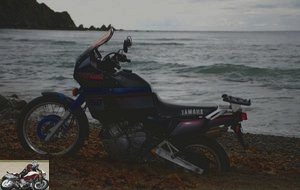
Today and despite its cycle part which is not a scalpel, the Super T still seduces with its very correct comfort and excellent reliability. As the prices are low, she deserves to be interested in her case again.
Strong points
- Round, torquey, pleasant motor
- Typical and successful look
- Very good comfort
- Driving skills
- Overall reliability
- Still low
Weak points
- Rigor of the chassis
- Soft braking
- Unpleasant box
- Deserved a box 6
The technical sheet of the Yamaha XTZ 750 Super Tenere
Test conditions
- Itinerary: a day’s drive on the road to Saint Jacques de Compostela and in good company !
- Motorcycle mileage: 31,900 km (barely running in, this 1992 Super T!)
- Problem encountered: a side stand that breaks off and unsuitable tires !
The competition: BMW R 100 / GS, Cagiva 750 Elephant, Honda 750 Africa Twin
- All Yamaha tests
- All trail tests
- The essential forum: www.super-tenere.org
Related articles
-
Upgrading Unchanged since 2012, the Yamaha 450 WRF has this time been completely revisited. Derived from the excellent YZF cross model, this new Yamaha…
-
Fashion victim ! The single-cylinder trail is out of fashion and that’s a shame. Because the Yamaha XTZ 660 Tenere remains the embodiment of the…
-
A high-end and sporty version of Yamaha’s favorite roadster Three cylinders in line, 847 cm3, 115 hp at 10,000 rpm, 8.9 m / kg at 8,500 rpm, 193 kilos, €…
-
Yamaha Tracer 700 GT motorcycle test
Joys of possibilities Twin-cylinder in-line, 689 cm3, 74.8 hp, 68 Nm, 200 kg all full, available in A2, 8,999 euros. The Yamaha Tracer 700 Gt! Here is a…
-
Backpacker at heart Twin-cylinder CP2 of 689 cm3, 74 hp and 68 Nm, 204 kg full made, 9,699 euros Stopped at the end of 2016 due to Euro 4 standards, the…
-
V2, 942 cm3, 54 hp, 81 Nm, 252 kilos, € 9,999 A scrambler made on the basis of the XV 950 customs Free your chains! Yes, refuse conformism, finally…
-
Suzuki F50 Super Stepthru test
Super underbone Single cylinder rotary valve 115 cm3 and 20 hp for 67 kg Imagine yourself on a racetrack 45 years ago, driving a Yamaha TA125, the…
-
Access to the Dark Side of Japan for adults from 5199 € 42 horsepower at 10,750 rpm, 29.6 Nm of torque at 9,000 rpm, for A2 licenses At Yamaha, the MT…
-
200 hp at 13,500 rpm, 112 N.m at 11,500 rpm, 199 kilos with full fuel, from € 18,499 Is the Crossplane engine an advantage in road use ? Even if the…
-
New re-evolution High-end road symbol of the manufacturer with tuning forks, the FJR 1300 descends from a long line of dynamic travelers. The first of…
Why do we like the bikes of the 90s so much ?, I will stall one in my age .. and in my super T weekends, especially since this business seems affordable.
Philippe always treats us so much with his constructed, complete articles, imbued with a non-pessimistic nostalgia, with well-felt humor (the hit of IP addresses) .
.
I who hate to be a fan (neither god nor master to think, but special thanks to those who heal our wounds of the soul Epictetus, Artistote, Montaigne and Confucius and … the cancoillotte), I have no good to give compliments, surtt on the web .. so will lay us a crappy article Philippe ?
V and good vibes at 6, 4, 3, 2 and mono and as I am having a good day even at scootbites.